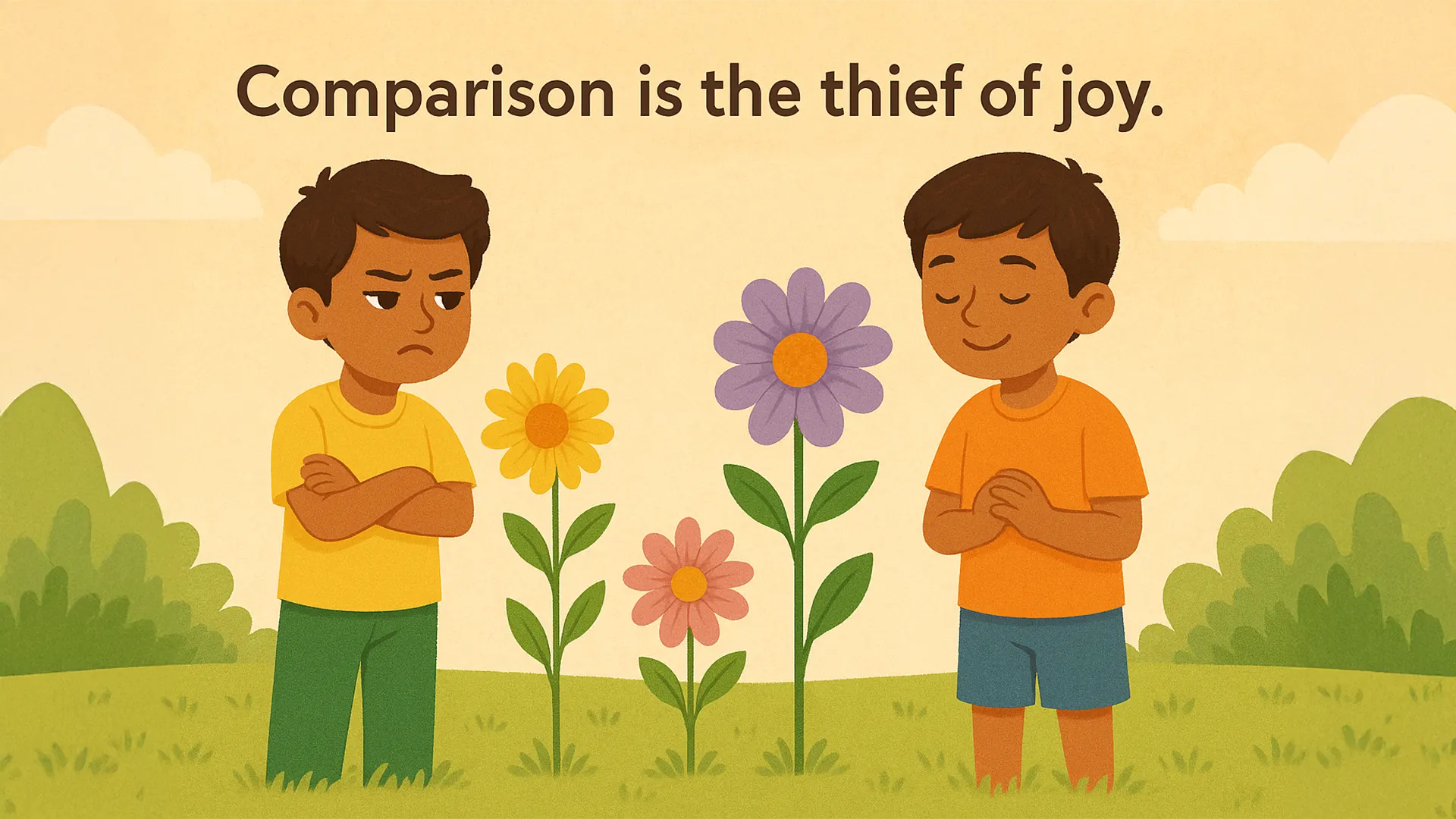Our mind is like a garden where various desires sprout. The mind that we wish to control, direct and channelise to attain our ultimate goal, this mind keeps on creating several desires. Some of these desires are like beautiful flowers that enhance our well-being, while others are like weeds that hinder our growth. The ancient Vedic scriptures describe three fundamental types of desires based on their nature:
- Mode of Ignorance (Tamas): When the mode of ignorance dominates, we experience desires for harmful behaviours like violence, anger, intoxication, laziness, and excessive sleep. These desires drag us down.
- Mode of Passion (Rajas): In the mode of passion, we crave sensory pleasures and worldly achievements. This leads to intense desires for the objects of the senses and intense ambition for worldly enhancement, prestige, and attainment of worldly objects.
- Mode of Goodness (Sattva): When the mode of goodness prevails, we seek peace of mind, knowledge, compassion, and service. These desires elevate us and contribute positively to our well-being.
So, we all have the natural disposition of our mind, which is characterised by these three modes. We also would like to eliminate the lower desires and enhance or develop the higher desires.
Desire is the root cause of Anger and Greed
These desires often lead us into trouble, and we wish to reduce them. There are also desires we would like to embrace—those that elevate our lives to sublime heights. However, managing these desires is a constant struggle. Vedic psychology offers a beautiful understanding of how this system works.
Desires can have two outcomes: they will either be fulfilled or unfulfilled. Unfulfilled desires lead to anger.
Imagine a man who craves his favourite ice cream. He goes to the market, buys five kilograms, and puts it in the refrigerator. Then, he goes for a walk to build up an appetite, planning to enjoy the ice cream when he returns. However, when he returns after an hour, he discovers that the ice cream is gone.
Furious, he confronts his wife: "I put the ice cream there. Where did it go?"
His wife calmly responds, "Remember, the doctor warned you about high cholesterol? I threw the ice cream away."
The husband's anger arises from an unfulfilled desire. Anger doesn't appear out of thin air; it's connected to our wants and expectations. So, when desires aren't met, anger can flare up.
Many people say or think that everything is fine except for one problem—they have a lot of anger. If one experiences anger, it means an unfulfilled desire is at its root.
What happens if the desire gets fulfilled? It gives rise to greed. Now, twist the situation and imagine the man finds the ice cream, indulges in it, and enjoys five spoons. But his desire doesn't stop there. He craves more—another five spoons. Still not satisfied, he continues: 15 spoons, 25 spoons. Maybe the point of satisfaction is 25 spoons for that day, but the cycle repeats, and even after three days, he wants more ice cream.
This illustrates how desire can be insatiable. No matter how much we have, the mind often seeks more. Recognising this pattern can help us manage our desires and find contentment.
The Vedas say the nature of material selfish desire is such that if you fulfil it, it will be extinguished for some time. Then, it will come back with redoubled intensity. In other words, it will lead to greed. The mind gets conquered by playing with the five senses.
न जातु काम: कामानामुपभोगेन शाम्यति ।
हविषा कृष्णवर्त्मेव भूय एवाभिवर्द्धते ॥
na jātu kāmaḥ kāmānām upabhogena śhāmyati
haviṣhā kṛiṣhṇa-vartmeva bhūya evābhivardhate
(Bhagavat 9.19.14)
Meaning: Fulfilling the desires of the senses does not extinguish them, just as offering oblations of butter in the fire does not extinguish it; instead, it makes the fire blaze even stronger.
The Vedic literature goes so far as to say that if some fortunate spiritual seeker, if some fortunate soul, can eliminate desire, that person becomes like God.
Buddha also made the elimination of desire the entire focus of his analysis, and he explained it as the cause of misery.
Why Does Desire Arise?
Desire is a common experience for all of us. We desire various things—a favourite food, a hobby, or a loved one. But what causes these desires to arise?
- Attachment: The root cause of desire lies in attachment. When our mind becomes attached to something—be it an object, a person, or an idea—that attachment fuels desire. It's like a mental magnet pulling us toward that thing.
- Not Just About Intrinsic Qualities: Interestingly, desire isn't solely based on the intrinsic qualities of an object. For instance, alcohol isn't inherently tasty or pleasant; it is actually foul-smelling. Yet, an alcoholic craves it intensely. Why? Because their mind has become attached to it.
- The Ugly Child Analogy: Consider a mother's love for her child. The mother's attachment transcends physical appearance, even if the child isn't conventionally beautiful. She loves that child deeply because of the emotional bond they share. It's not about beauty; it's about attachment.
- Desire Begets Anger and Greed: Once desire takes hold, it often leads to other emotions. Anger arises when desires are thwarted, and greed emerges when we want more and more. So, attachment sets off a chain reaction.
Why Does the Mind Become Attached?
- Repetition Creates Attachment: Imagine you repeatedly think about happiness associated with something—a person, an object, or an experience. Each time you revisit this thought, you reinforce the idea that happiness resides there. Gradually, your mind becomes attached to it.
- The Cigarette Example: Consider someone who becomes attached to cigarettes. Initially, they might try smoking due to peer pressure or curiosity. Even if the experience is unpleasant, their friends insist it brings happiness. Over time, the brain associates smoking with pleasure. Soon, the person craves more cigarettes—the mind is now attached.
In summary, attachment forms through our own repeated contemplation of happiness in a particular context. Understanding this process helps us navigate desires and attachments more consciously.
How Thoughts Shape Attachment
- Neural Pathways: Like powerful hardware, our brain has around 100 billion neurons. When we think of certain thoughts repeatedly, neural pathways form, making those thoughts easier to access over time.
- Attachment Formation: Attachment arises from this repetition. If we contemplate something—whether positive or negative —the brain reinforces the connection. It's like creating a mental groove.
- Choosing Wisely: To cultivate healthy attachments, focus on positive thoughts. Contemplate happiness in things that benefit your life. By doing so, you shape your mind toward constructive patterns.
In conclusion, understanding the nature of desires and their impact on our emotions and actions can empower us to lead more fulfilling lives. By recognising the roots of our desires, managing them, and striving for contentment, we can navigate the complexities of the mind and cultivate a sense of inner peace. By acknowledging the wisdom found in ancient texts and teachings, we can find valuable insights into the nature of desire and work towards transcending it to achieve a more profound state of being.









What our Participants say